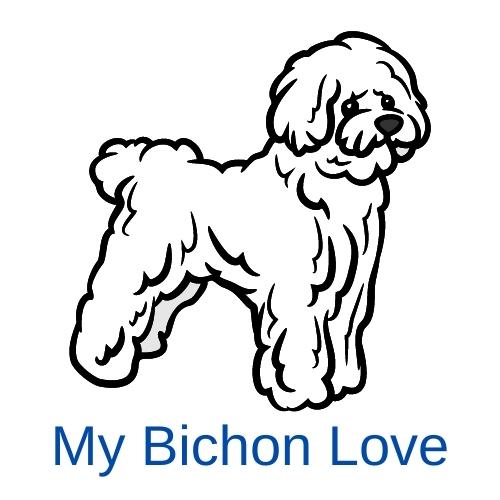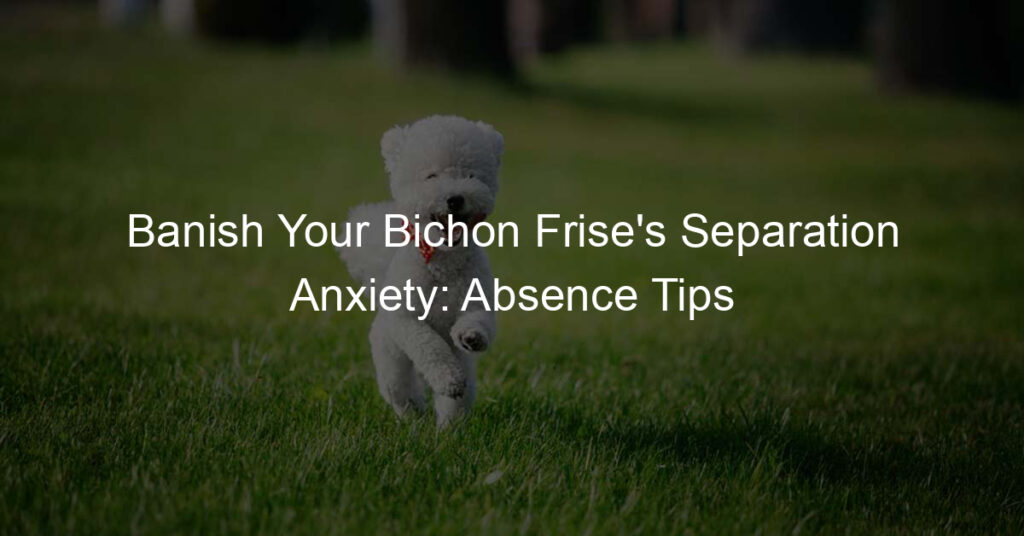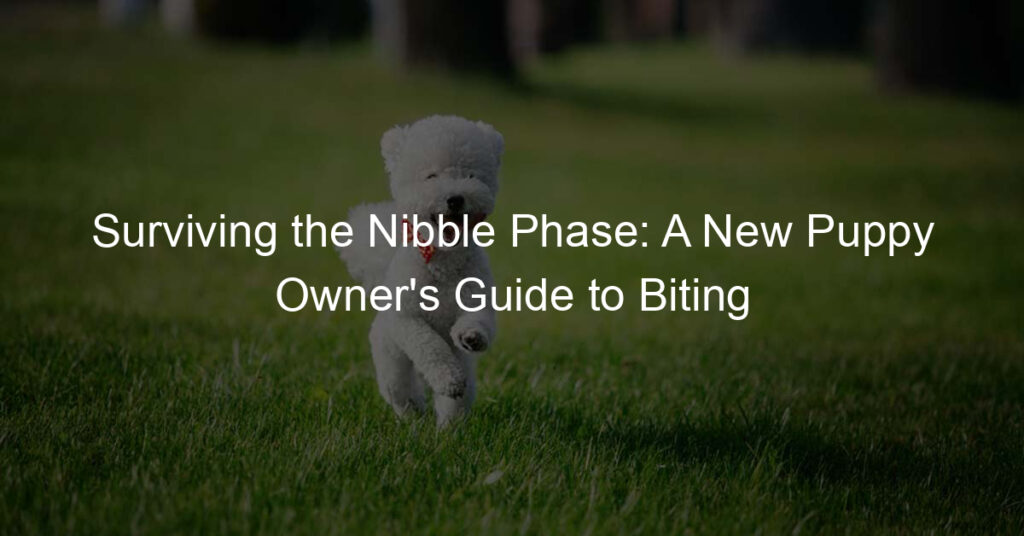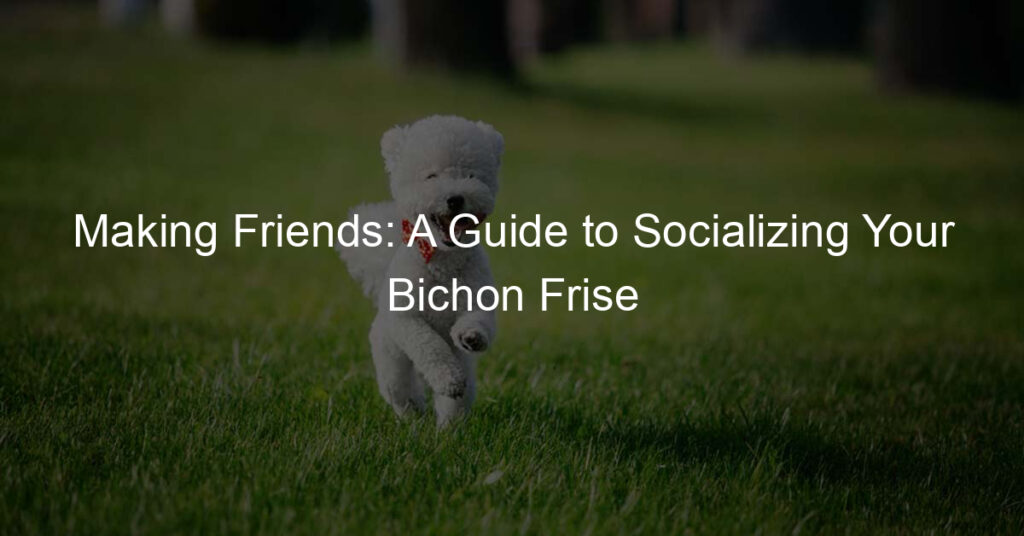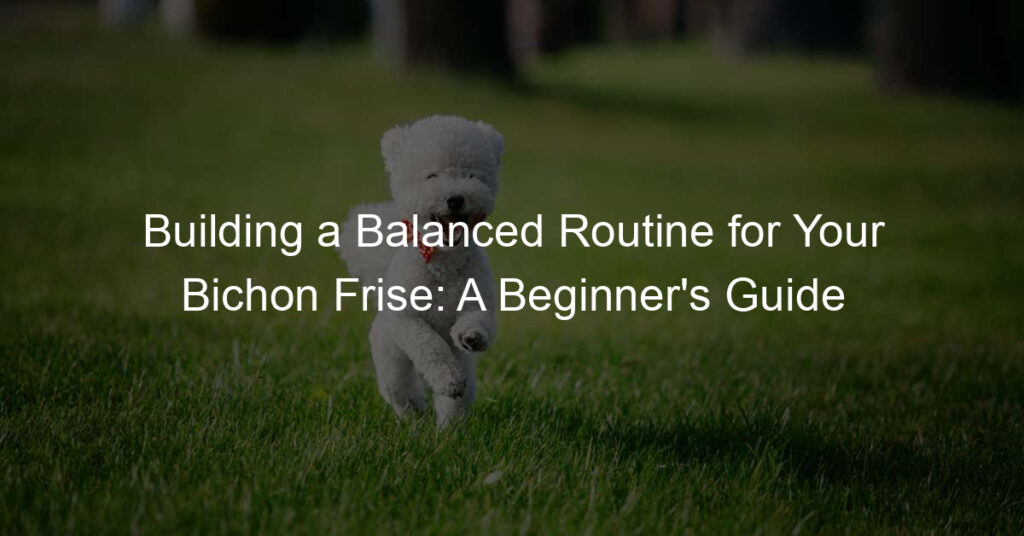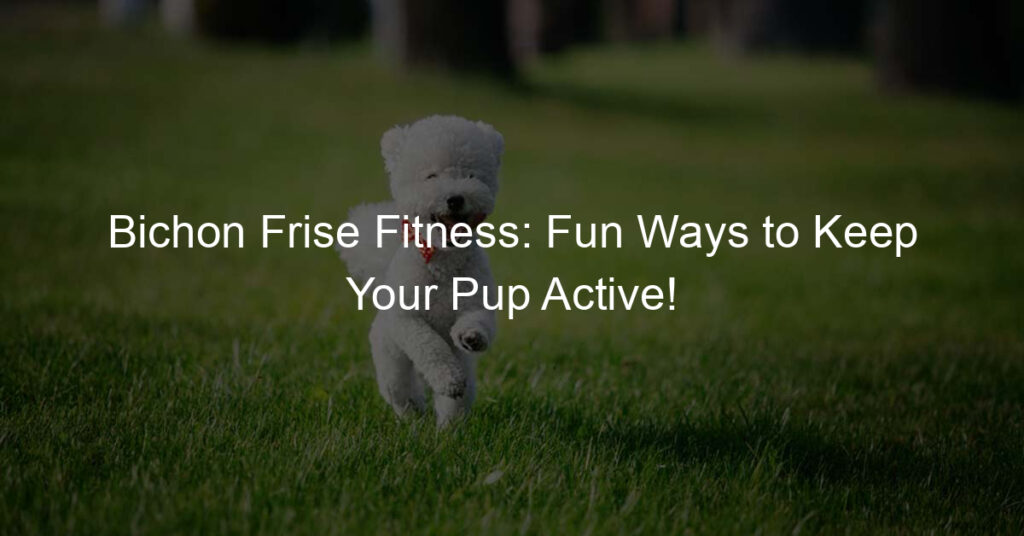
Introduction to Bichon Frise for New Owners
Welcome to the world of Bichon Frise ownership! This guide will provide you with a comprehensive overview of this charming breed and what you can expect as a new owner. Let’s dive in!
-
Overview of the Bichon Frise Breed
The Bichon Frise, often simply referred to as a ‘Bichon’, is a small breed known for its cheerful disposition and fluffy white coat. Originating from the Mediterranean region, these dogs were popular with royalty and nobility throughout history.
They are part of the ‘Toy’ group, typically weighing between 10 to 20 pounds and standing about 9 to 12 inches tall. Bichons are known for their friendly and outgoing nature, making them excellent companions. They are also hypoallergenic, which makes them a great choice for people with allergies.
Despite their small size, Bichons are quite active and require regular exercise. They are intelligent and enjoy learning new tricks, making them a joy to train. However, they can be a bit stubborn at times, so patience is key.
-
What to Expect as a New Bichon Frise Owner
As a new Bichon Frise owner, you can expect a lot of fun and companionship. These dogs are known for their friendly and playful nature, and they love to be the center of attention. They are great with kids and other pets, making them a wonderful addition to any family.
However, owning a Bichon also comes with responsibilities. They require regular grooming to keep their coat looking its best. Their active nature means they need daily exercise to stay healthy and happy. And because they are intelligent and sometimes stubborn, they require consistent training from a young age.
But don’t worry, all the effort is worth it. The love and companionship of a Bichon Frise is truly special. As one Bichon owner puts it, “Owning a Bichon is like having a little piece of sunshine in your home.”
Bichon Frise Training Guide: Getting Started
Training your Bichon Frise can be a rewarding experience. This guide will help you understand your Bichon Frise’s behavior and how to respond to it effectively.
Understanding Your Bichon Frise
Before you start training your Bichon Frise, it’s important to understand their behavior. This will help you communicate with them effectively and build a strong bond.
- The importance of understanding your dog’s behavior
- Common Bichon Frise behaviors and what they mean
Understanding your dog’s behavior is crucial for successful training. It helps you identify their needs, fears, and preferences. When you understand why your dog behaves in a certain way, you can respond appropriately and build trust. For instance, if your Bichon Frise is barking excessively, it might be due to fear, boredom, or a need for attention. By understanding the cause, you can address the issue effectively.
Bichon Frises are known for their friendly and affectionate nature. They are also intelligent and quick to learn. Here are some common behaviors and what they might mean:
| Behavior | Meaning |
|---|---|
| Tail wagging | This usually indicates happiness or excitement. |
| Whining | Your Bichon Frise might be anxious, bored, or in need of attention. |
| Chewing | This could be a sign of teething in puppies, or boredom in adult dogs. |
| Barking at strangers | This could indicate fear or territorial behavior. |
Remember, every dog is unique. Your Bichon Frise might display other behaviors not listed here. The key is to observe and understand their individual personality and behavior patterns.
Setting Up Your Home for a Bichon Frise
Preparing your home for a new Bichon Frise is an essential step in welcoming this small, cheerful breed into your family. Let’s explore how to choose the right space and the essential items your new furry friend will need.
- Choosing the Right Space for Your Bichon Frise
- Essential Items for Your New Bichon Frise
Bichon Frises are small dogs, but they are also lively and active. They need space to move around and play. A room with enough space for a dog bed, toys, and room to run is ideal. Remember, Bichon Frises are social animals, so the space should be somewhere where the family spends a lot of time. They don’t like being left alone for long periods.
Also, Bichon Frises are known for their white, fluffy coats. This means they can get cold easily, so make sure the space is warm and cozy. Avoid places with drafts or cold floors. A carpeted room or a room with a large rug is a good choice.
There are several items you’ll need to make your Bichon Frise feel at home. Here are the most important ones:
| Item | Description |
|---|---|
| Dog Bed | A soft, comfortable bed is a must. Bichon Frises like to curl up and sleep, so make sure the bed is big enough for them to do so comfortably. |
| Food and Water Bowls | Choose bowls that are the right size for your Bichon Frise. They should be sturdy and easy to clean. |
| Toys | Bichon Frises are playful dogs, so a variety of toys is essential. Include chew toys, balls, and interactive toys to keep them entertained. |
| Grooming Supplies | A brush for their fluffy coat, dog shampoo, nail clippers, and a toothbrush are all important for keeping your Bichon Frise looking and feeling their best. |
Remember, every dog is unique. Your Bichon Frise might have other specific needs, so be prepared to adjust this list as you get to know them better.
Training Tips for Bichon Frise: Basic Commands
Training your Bichon Frise can be a fun and rewarding experience. One of the first commands you’ll want to teach your furry friend is the basic “sit” command. Let’s explore how to do this effectively.
Teaching Your Bichon Frise to Sit
Teaching your Bichon Frise to sit is a fundamental part of their training. It’s a command that promotes good behavior and can be used in various situations. Here’s a step-by-step guide to help you along the way.
- Step-by-step guide to teaching the “sit” command
- Common mistakes and how to avoid them
1. Stand in front of your Bichon Frise with a treat in your hand.
2. Hold the treat above their head, causing them to look up. As their head goes up, their bottom should naturally go down.
3. As soon as they sit, say “sit” clearly and give them the treat along with lots of praise.
4. Repeat this process several times a day. Remember, consistency is key in dog training.
Training your Bichon Frise to sit is not always a walk in the park. Here are some common mistakes and tips on how to avoid them:
1. Repeating the command: If your dog doesn’t sit at first, avoid repeating the command. This can confuse them. Instead, show them what “sit” means by guiding them into the position.
2. Not rewarding immediately: Dogs live in the moment. If you don’t reward them immediately after they sit, they might not associate the reward with the action. Always have treats ready.
3. Training for too long: Bichon Frises have short attention spans. Keep training sessions short and sweet, ideally 5-10 minutes at a time.
Remember, patience and consistency are key when training your Bichon Frise. With time and practice, your furry friend will master the “sit” command and be ready to learn more.
Teaching Your Bichon Frise to Stay
Teaching your Bichon Frise to stay is an essential part of their training. This command is not only useful in everyday situations but also crucial for their safety. Let’s explore some effective techniques for teaching the “stay” command and how to reinforce it over time.
- Effective Techniques for Teaching the “Stay” Command
Training your Bichon Frise to stay involves patience, consistency, and positive reinforcement. Here are some steps to follow:
| Step | Description |
|---|---|
| 1 | Start by asking your Bichon Frise to sit. Once they are sitting, open your palm in front of you and say “stay”. |
| 2 | Take a step back. If your Bichon Frise stays, give them a treat and praise them. If they move, go back to step one. |
| 3 | Gradually increase the distance and time. Remember, it’s important to go at your dog’s pace and not rush the process. |
- How to Reinforce the “Stay” Command Over Time
Reinforcing the “stay” command over time is all about practice and consistency. Here are some tips:
- Practice the “stay” command in different environments and situations. This helps your Bichon Frise understand that “stay” means the same thing no matter where they are.
- Use the “stay” command in real-life situations. For example, ask them to stay when you’re about to serve their food, or when the doorbell rings.
- Always reward your Bichon Frise for obeying the “stay” command. This could be with treats, praise, or a favorite toy. Remember, positive reinforcement is key.
With patience and consistency, your Bichon Frise will master the “stay” command in no time. Remember, every dog learns at their own pace, so don’t be discouraged if progress seems slow. Keep practicing, stay positive, and your hard work will pay off.
Beginner’s Guide to Bichon Frise: Socialization and Exercise
One of the most important aspects of owning a Bichon Frise is understanding their need for socialization and exercise. These two elements are crucial for their overall well-being and happiness.
Socializing Your Bichon Frise
Socialization is the process of introducing your Bichon Frise to a variety of experiences, environments, and individuals. This helps them become comfortable and confident in different situations. Let’s delve deeper into why socialization is important and how to do it effectively.
- Why socialization is crucial for your Bichon Frise
- Tips for successful socialization
- Start Early: The best time to start socializing your Bichon Frise is when they are a puppy. This is when they are most receptive to new experiences.
- Expose Gradually: Introduce your Bichon Frise to new experiences gradually. Start with calm environments and slowly introduce more stimulating ones.
- Positive Reinforcement: Always reward your Bichon Frise for positive behavior during socialization. This could be with treats, praise, or a favorite toy.
- Consistency is Key: Consistency is crucial in socialization. Make sure to expose your Bichon Frise to new experiences regularly.
Socialization is vital for your Bichon Frise for several reasons. Firstly, it helps prevent fear and aggression. Dogs that are well socialized from a young age are less likely to develop behavioral problems in the future. Secondly, it enhances their mental health. Exposing your Bichon Frise to a variety of experiences helps keep their mind sharp and engaged. Lastly, it contributes to their overall happiness. A well-socialized dog is a happy dog!
Now that we understand why socialization is important, let’s look at some tips for successful socialization:
In conclusion, socialization is a crucial part of your Bichon Frise’s life. It helps them become a well-rounded, confident, and happy dog. Remember, the key to successful socialization is to start early, expose gradually, use positive reinforcement, and be consistent.
Exercise Needs of a Bichon Frise
Just like humans, dogs also need regular exercise to maintain their health and happiness. This is especially true for a Bichon Frise, a breed known for its lively and playful nature. Understanding and meeting the exercise needs of your Bichon Frise is essential in ensuring they live a long, healthy, and happy life.
- Understanding the Exercise Needs of Your Bichon Frise
- Fun and Effective Exercise Activities for Your Bichon Frise
- Walks: A simple walk around the neighborhood can provide both physical exercise and mental stimulation for your Bichon Frise. They will enjoy exploring new scents and sights, and it’s a great opportunity for them to socialize with other dogs and people.
- Playtime: Bichon Frises love to play. Games like fetch, tug-of-war, or hide and seek can provide a good workout for them. Plus, it’s a great way to bond with your pet.
- Training: Training sessions can also serve as a form of exercise. Teaching your Bichon Frise new tricks or commands can keep them mentally stimulated and physically active.
- Agility Training: Bichon Frises are known for their agility. Setting up an agility course in your backyard can provide a fun and challenging workout for your pet.
A Bichon Frise is a small dog with a big personality. They are energetic and love to play, which means they require a moderate amount of exercise daily. On average, a Bichon Frise should have at least 30 minutes to an hour of physical activity each day. This can be broken down into several short walks and play sessions throughout the day. Regular exercise helps to keep your Bichon Frise healthy, mentally stimulated, and happy. It also helps to prevent behavioral problems such as excessive barking or chewing.
There are many fun and effective ways to exercise your Bichon Frise. Here are a few suggestions:
In conclusion, understanding and meeting the exercise needs of your Bichon Frise is crucial for their overall health and well-being. Remember, a well-exercised Bichon Frise is a happy Bichon Frise!
Best Training Methods for Bichon Frise: Advanced Training
As we delve into advanced training techniques for your Bichon Frise, it’s important to remember that patience and consistency are key. In this section, we’ll focus on teaching your Bichon Frise how to fetch.
Teaching Your Bichon Frise to Fetch
Fetch is not just a fun game for your Bichon Frise, but it’s also a great way to exercise their mind and body. Here’s a step-by-step guide to teaching the “fetch” command and making it a fun game for your pet.
- Step-by-step guide to teaching the “fetch” command:
- How to make fetch a fun game for your Bichon Frise:
1. Start by choosing a toy that your Bichon Frise loves. It should be something easy for them to carry in their mouth.
2. Throw the toy a short distance away and say “fetch” in a clear, upbeat voice.
3. When your Bichon Frise goes to the toy, praise them enthusiastically. If they pick it up, praise them even more.
4. Once your Bichon Frise has the toy in their mouth, call them back to you. If they come back with the toy, give them lots of praise and a treat.
5. Repeat this process, gradually increasing the distance you throw the toy.
1. Keep the training sessions short and fun. Bichon Frises have a short attention span and can get bored easily.
2. Always end the game on a positive note, with lots of praise and a treat.
3. Mix up the toys you use for fetch to keep your Bichon Frise interested.
4. Play fetch in different locations to make it more exciting for your pet.
Remember, training should always be a positive experience for your Bichon Frise. With patience and consistency, your pet will soon be fetching like a pro!
Teaching Your Bichon Frise to Roll Over
Training your Bichon Frise to roll over can be a fun and rewarding experience for both you and your furry friend. This trick is not only entertaining but also helps to keep your dog active and mentally stimulated. Here are some effective techniques and common challenges you might face while teaching this command.
- Effective Techniques for Teaching the “Roll Over” Command
- Step 1: Start with your dog in a ‘down’ position. This means your dog should be lying down on its stomach.
- Step 2: Hold a treat close to your dog’s nose and slowly move it towards their shoulder. This should cause them to turn their head and shift their weight.
- Step 3: Continue moving the treat so that your dog rolls onto their back, and then onto their other side. As they complete the roll, say the command “roll over”.
- Step 4: Reward your dog with the treat and plenty of praise. Repeat this process until your dog can roll over on command without the need for a treat.
- Common Challenges and How to Overcome Them
- Challenge 1: Your dog doesn’t follow the treat. If this happens, try using a different treat that your dog finds more appealing. You can also try moving the treat slower or faster, depending on your dog’s reaction.
- Challenge 2: Your dog only rolls halfway. If your dog stops rolling halfway, it may be because the surface is uncomfortable. Try practicing on a softer surface like a carpet or grass.
- Challenge 3: Your dog gets up instead of rolling over. If your dog gets up instead of rolling over, it may be because they’re not fully understanding the command. Be patient and consistent with your training, and remember to reward your dog each time they make progress.
Teaching your Bichon Frise to roll over involves a series of steps. Here’s a simple guide to help you get started:
While teaching your Bichon Frise to roll over, you may encounter a few challenges. Here are some tips to help you overcome them:
Remember, every dog learns at their own pace. Be patient, consistent, and make the training sessions fun for your Bichon Frise. With time and practice, your furry friend will soon be rolling over on command!
Conclusion: Mastering Bichon Frise Training
As we wrap up this comprehensive guide on Bichon Frise training, let’s take a moment to revisit the key points and look forward to the rewarding journey of bonding with your furry friend.
- Recap of essential training tips for new Bichon Frise owners
Training your Bichon Frise is a process that requires patience, consistency, and positive reinforcement. Remember, the earlier you start, the better. Begin with basic commands like ‘sit’, ‘stay’, and ‘come’ before moving on to more advanced training. Socialization and exercise are equally important to ensure your Bichon Frise grows into a well-rounded and happy dog. Always use positive reinforcement methods and avoid harsh punishments.
- Encouragement for continued training and bonding with your Bichon Frise
Training your Bichon Frise is not a one-time task, but a continuous journey that strengthens your bond with your pet. As you spend more time training, you’ll understand your Bichon Frise’s unique personality and needs better. This understanding will help you tailor your training methods to suit your pet’s preferences, making the process more enjoyable and effective for both of you. Remember, the goal is not just to train your Bichon Frise, but to create a strong, loving bond that lasts a lifetime.
So, keep going! Your dedication and love will shape your Bichon Frise into a wonderful companion. Happy training!
